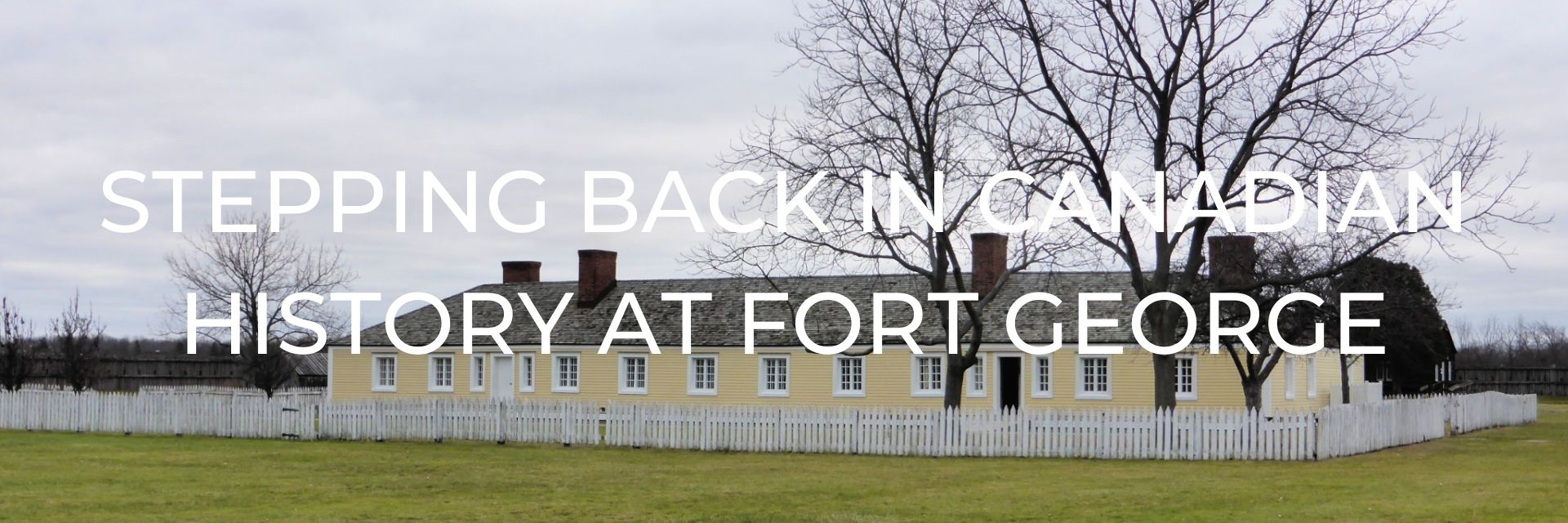
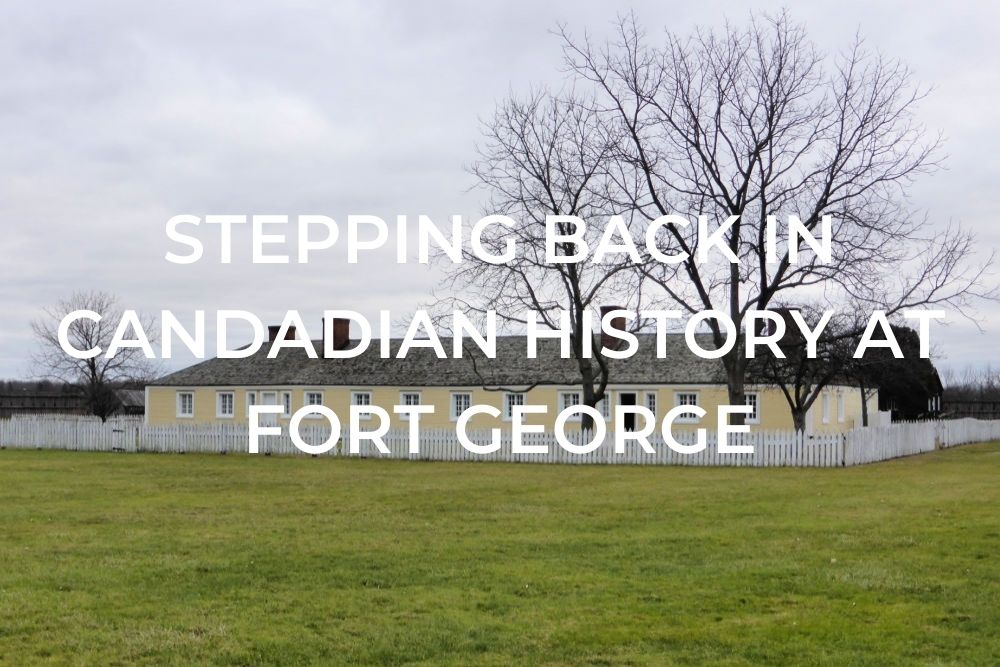
I will admit that I know far less about my own country’s history than I should. In school, History class always just seemed like a bunch of dates and people’s names that I would never remember and I couldn’t wait to get out of each class and on to the other classes I liked so much more.
These days I don’t think my History teachers would recognize me as I am constantly seeking out information about the history of the places I visit, especially after my trip when I dig a little deeper into the things I learned on the trip. There is just something about being “there”, wherever “there” may be that sparks something in me and finally puts a face to those names and a story to all those dates. Such was the case again with our visit to Fort George in Niagara-on-the-Lake, Canada.
HISTORY OF FORT GEORGE
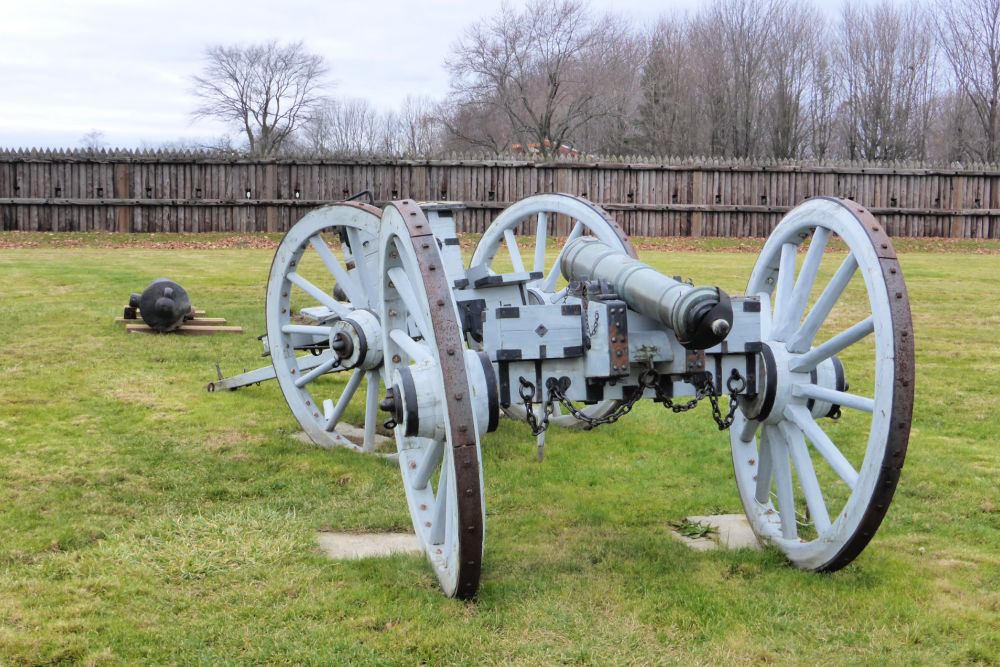
In the late 1800’s the British complied with the 1783 Treaty of Paris which granted Fort Niagara to the United States but set out right away to build another fort across the river to protect their interests in the Niagara region. By 1802 the fort, Fort George, was completed and became the headquarters for the British Army, local militia and the Indian Department.
Within its walls, the Royal Engineers built a guardhouse, log blockhouses, a hospital, kitchens, workshops, barracks, officer’s quarters, and a stone powder magazine. The fort was abandoned and fell into ruins in the 1820’s- all except the powder magazine which still stands today. The rest of the fort was reconstructed in the 1930s, guided by those original plans from the Royal Engineers, and is now a National Historic Site.
Fort George was the scene of many battles during the War of 1812 between the British Army (which included the local militia and aboriginal warriors) and the American forces. In May 1813 the fort sustained heavy damage and was captured by the Americans who then held the fort for seven months. Later that year the British forces recaptured Fort George and Fort Niagara to take firm control of the Niagara frontier. Today Fort George stands in Canada and Fort Niagara, on the other side of the river, in the United States.
VISTING FORT GEORGE
Today the fort is impressive with six big earthen and log bastions linked by a wooden palisade and surrounded by a dry ditch. Within the walls are reconstructions of the guardhouse, blockhouses that contain the barracks and storage depot, a kitchen, workshop, and an officer’s quarters. The stone powder magazine is original and is the oldest military building in Ontario.
GUARDHOUSE AND ARTILLERY DISPLAY
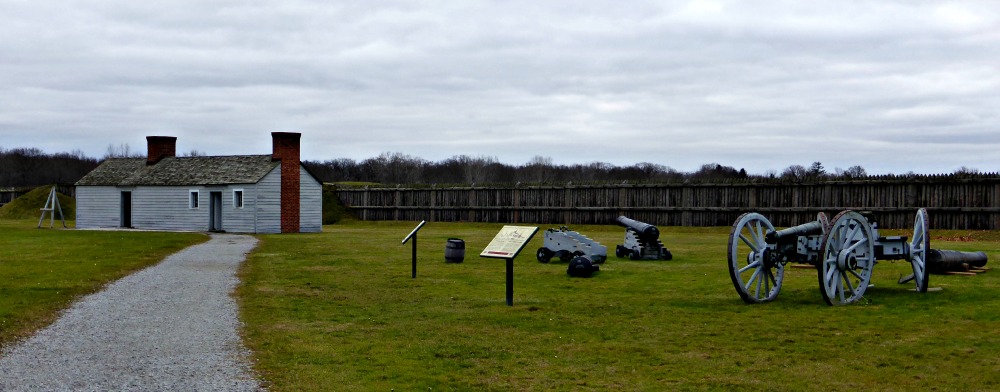
Upon entering the walls surrounding the fort we took our path to the right that led us to the artillery display and then along to the guardhouse.
The artillery was crucial to the defense of the province and the equipment on the field showed how the soldiers moved the very heavy cannons.
The guardhouse was the centre of the fort’s daily operations and all visitors were required to report there before proceeding further into the fort. Inside the guardhouse were some basic wooden beds where the soldiers could try and get a little rest between their shifts, though it was likely quite hard as they weren’t allowed to remove their uniforms or equipment. Imagine now trying to catch some zzz’s with a musket strapped to you. Also contained in the guardhouse was “The Black Hole” which was the small military prison on the fort that held deserters, drunken soldiers, and other unfortunate souls that got up to no good.
OFFICER’S QUARTERS
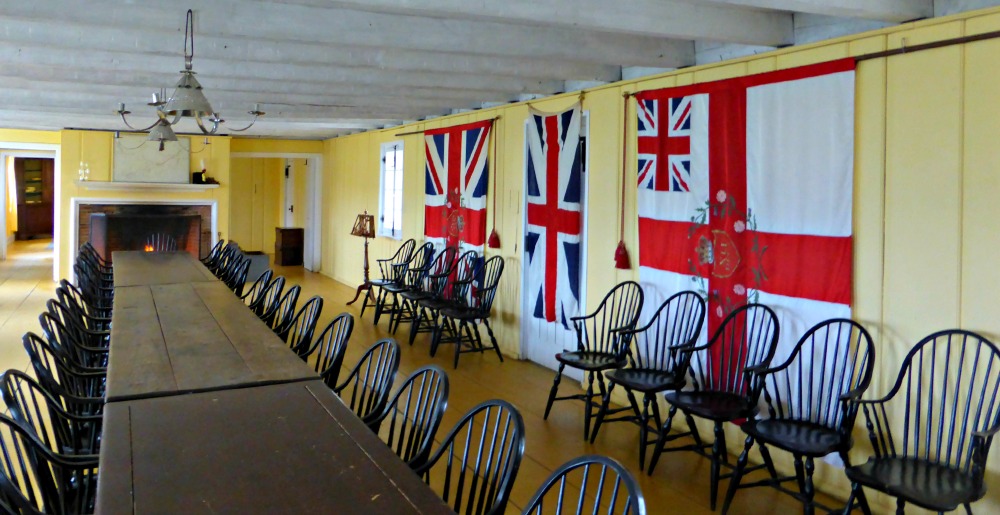
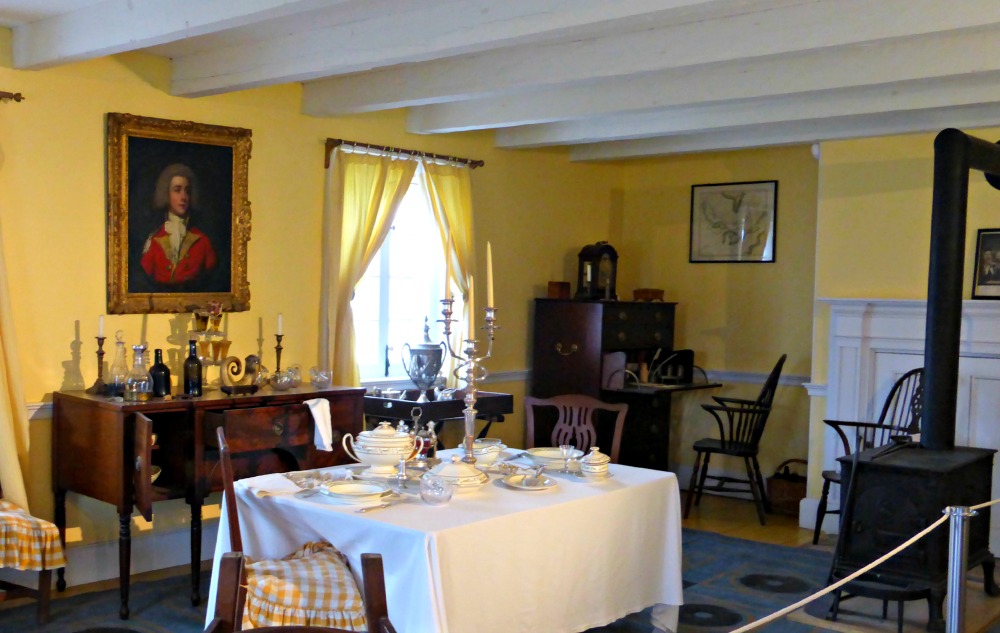
Officers were expected to live like gentlemen, even on the frontier, so they tried to recreate the high social and material standards they were used to in Great Britain within their living quarters.
The mess was the centre of social activity and dinners were sophisticated, complete with fine silverware and china, and then concluded with card games, music, and more wine during the evening in the games room.
KITCHEN AND STOREROOM
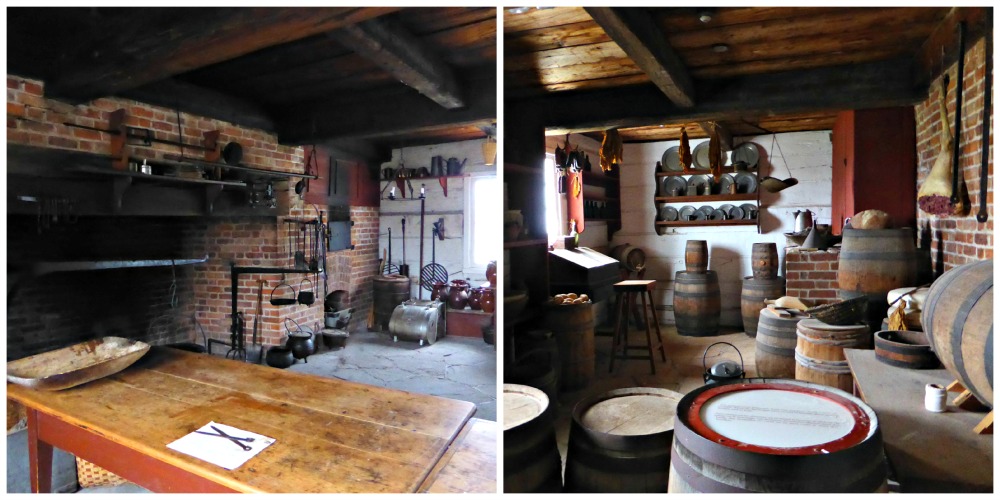
The elaborate full-course dinners the officers ate were made in the Officers’ Kitchen, with this recreated kitchen containing typical early 19th-century cooking equipment. Experienced cooks were able to create quite fancy dishes even in these simple open hearth and brick ovens.
ARTIFICER’S SHOP
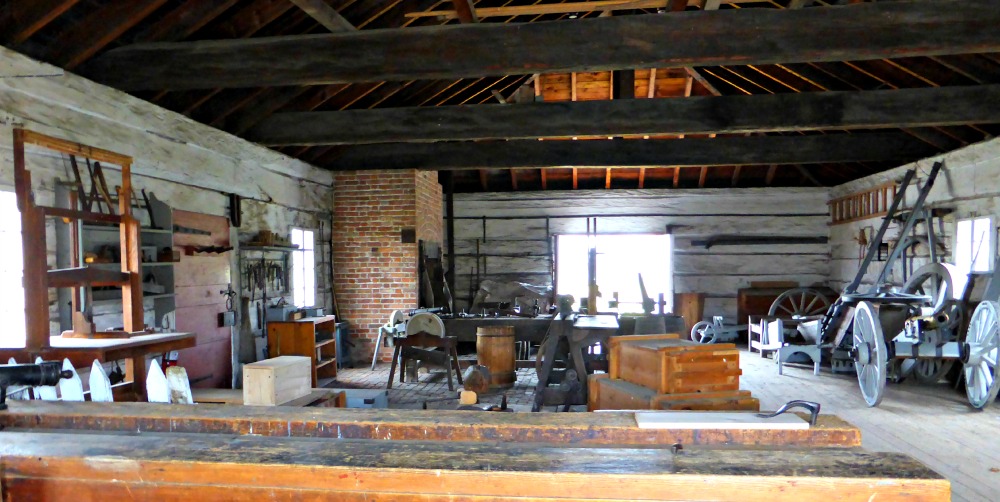
Being thousands of miles away from the central source of supplies for the fort, they had to employ well-trained and resourceful craftsmen, or artificers, to repair or make many items. They were called on to create tools, repair gun carriages, and even the buildings themselves.
POWDER MAGAZINE
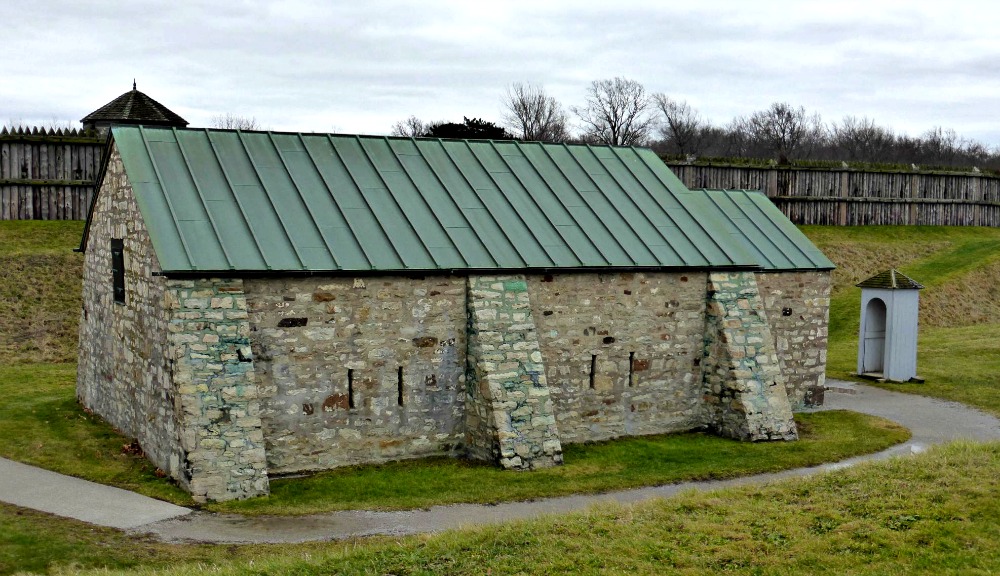
The powder magazine is the only fort building that survived the War of 1812 and is pretty impressive. During those times several hundred barrels of gunpowder were stored within the thick stone walls and very strict precautions were taken to avoid accidental explosions. Only spark-proof materials were used in the building, right down to the floorboards being held in place with wooden pegs instead of iron nails.
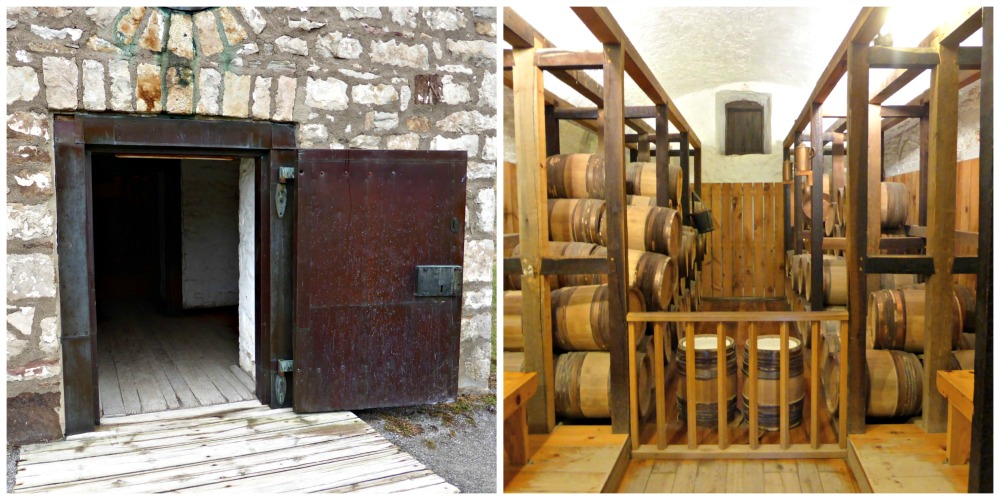
OCTAGONAL BLOCKHOUSE AND FLAG BASTION
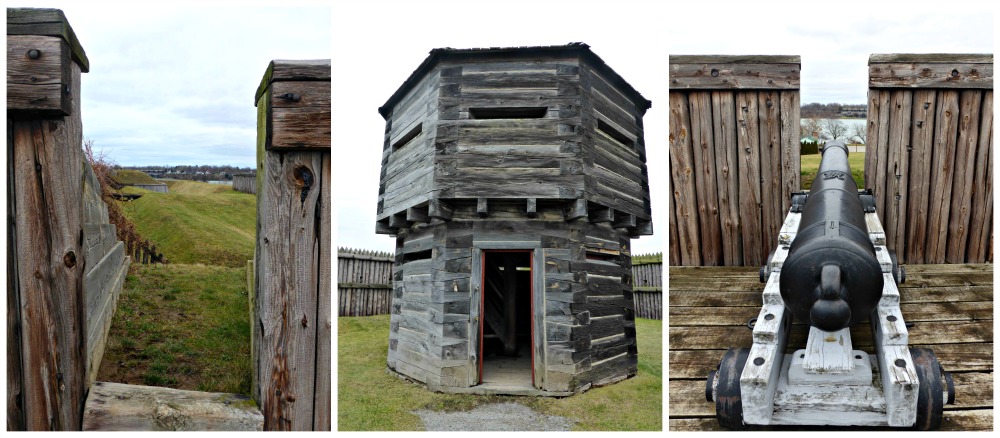
The octagonal blockhouse is a replica of the one that was originally built to serve as an artillery storehouse and a defensive position and lookout during an attack. It is connected to the fort via an underground stone tunnel.
The cannon in the photo is one of several lined up along a heavily armed bastion that overlooks the Niagara River to the American Old Fort Niagara. Below this bastion were the storehouses and wharves of the Navy Hall, which were the local headquarters for Britain’s Great Lakes fleet.
BARRACKS INSIDE BLOCKHOUSE 2
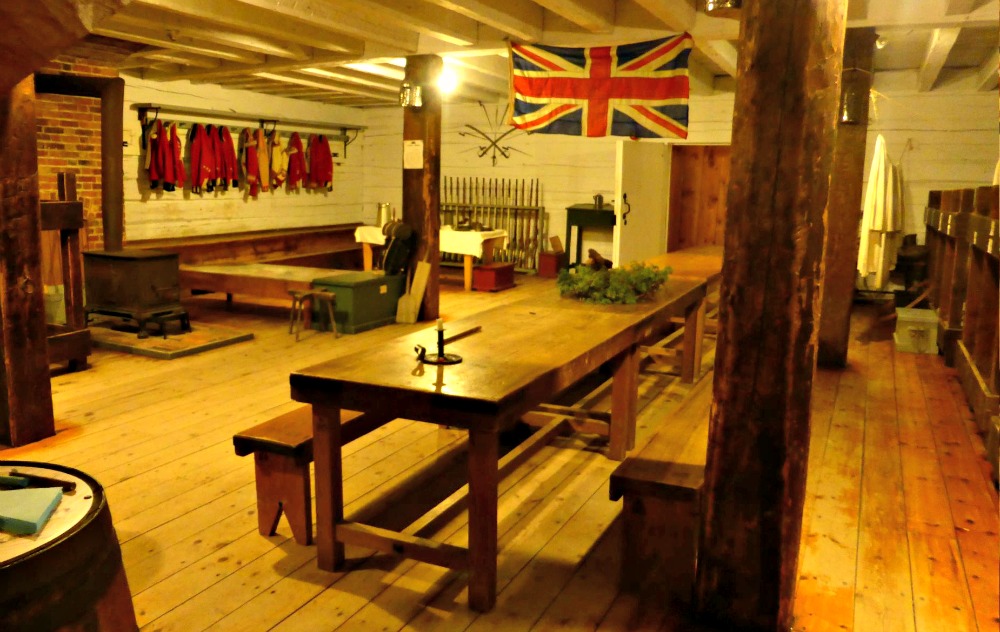
The barracks inside Blockhouse 2 provided living quarters for soldiers and their wives and children. Along the right side of the photo, you see the “married quarters” which consisted of a blanket hung around a bottom bunk…about six inches from the “married quarters” of the next soldier and his wife. How’s that for privacy eh?
MUSKET DEMONSTRATION
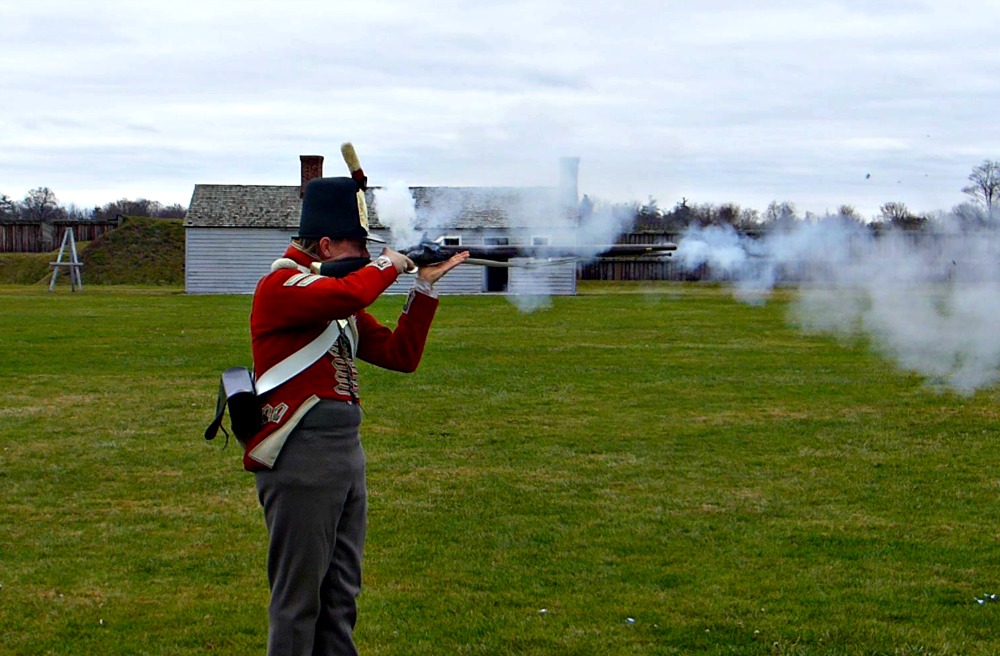
To finish off our visit we took in a demonstration on how to fire a musket and this gentleman knew his stuff! He told us all about the barracks and living conditions, why the British Army wore bright red coats and described the scene of a battle when this fort would have had hundreds of men all firing their muskets.
If you visit, definitely stick around for this and get in on one of his history lessons.
RESOURCES | PLAN YOUR TRIP TO CANADA
Some of the links in the post above are affiliate links. This means if you click on the link and purchase the item, we will receive an affiliate commission but this does not affect the price to you. Please read our full disclosure policy here.





